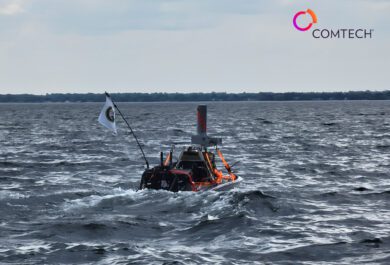One of the most important jobs of an Emergency Communications Center (ECC) Director is to manage resources including technology, staff, and data. All components should work cohesively to improve response times during emergencies, which are often a matter of life and death. The foundation to a smooth and timely response process is accurate and quality location information. When seconds count, emergency personnel need to know precisely what resources to dispatch and how to route them effectively. Actionable location intelligence is what provides emergency staff the holistic information they need to perform optimally during a crisis. More than just a dot on a map, learn what tangible benefits that actionable location intelligence offers your team to improve ECC responses.
4 Characteristics of an Actionable Location Intelligence Platform
True location intelligence consists of many elements such as real-time weather conditions, minute-by-minute traffic updates, and the availability of ECC resources like automated external defibrillators (AED) near the emergency area. Here are four characteristics that help identify whether a location intelligence platform is providing actionable insights to your ECC.
Multiple Data Points
Data accuracy is a significant challenge for ECCs and can be improved by collecting data from multiple reliable sources. Wearable technology and the IoT have created numerous data points that are available to connect with each other. These additional data points can be used to cross-reference, validate, and work with each other to build an accurate scene, especially when callers are affected by extreme stress or may not be able to convey all relevant information. For example, a cell phone signal might be able to pinpoint the location of a caller when they’re only aware of the street name. During a home invasion, a smart device can automatically alert ECCs with the address, homeowner, and building information needed to dispatch the appropriate resources.
The opportunity to collect data from multiple sources is expanding and an actionable location intelligence platform capitalizes on the availability of the additional information. In order to deploy resources efficiently and as fast as possible, the accuracy of data is critical to minimize loss of life and property.
Aggregation into a Single View
Not only is the accuracy of data critical, but also the amount of time it takes to collect and react to the information. Multiple data points, although beneficial for providing supplemental knowledge, could be a hindrance if not organized properly. Sorting through multiple screens only delays emergency personnel in dispatching help to callers.
An advanced location intelligence platform aggregates data into a single map view so that first responder call takers can make quick, accurate decisions. A streamlined view makes it easier to assess a situation, which reduces the amount of time it takes to respond to an emergency. Imagine a common operating picture (COP) that displays the incident location, traffic, caller information, weather, and ECC resource information in an intelligent display. It would take only one look for emergency personnel to attain situational awareness, rather than switching between many internet tabs and software platforms to gather the same amount of data. Efficiency plays an important role in an ECC’s ability to act swiftly and technology can be an asset when configured with the needs of emergency personnel in mind.
Real-Time Views
Emergency response is only as good as the data that first responder call takers use to base their decisions. A location intelligence platform not only displays multiple data points on a single screen, but continually updates as new information is available for a true COP.
Weather and traffic conditions are two main factors that impact route selection and the time it takes for responders to reach the incident, both of which are constantly changing. Advanced ECC technology accesses live camera feeds for personnel to view the current road status and adapt routing of emergency vehicles accordingly. A fallen tree, school release times, civil unrest, or street construction are all examples that could impact travel time and the route taken. The combination of traffic, weather, and camera feeds provided to a telecommunicator will assist them in directing the first responders on the most efficient route available.
Real-time visibility ensures that emergency personnel have the accurate intelligence they need to efficiently direct resources to the right location.
Cloud-Based
Employing cloud-based technology is becoming increasingly more common with 6 out of 10 businesses migrating to the cloud in 2020. There are many advantages to using cloud-based location intelligence solutions due to the interoperability and scalability it provides ECCs. Open application programming interfaces (APIs) allow developers to manipulate backend data and integrate applications with others. Without limitations by copyrights and patents, many opportunities exist to incorporate value-adding applications to software platforms. The programs can then freely communicate with each other and exchange information. Moreover, if location intelligence software is cloud-based, the system is easily scalable, which means there aren’t hardware upgrades to implement, on-premise servers to maintain, or restrictions on user count or storage. System updates process faster and allow for shorter deployment cycles as well. If an ECC is seeking flexible technology that evolves to meet desired capability and growth needs, a cloud-based location intelligence platform is ideal.
How to Implement an Actionable Location Intelligence Platform
Implementing an actionable location intelligence platform that equips your team with complete situational awareness depends on the current technology in place. As discussed, there are tangible benefits of sourcing from multiple data points, aggregating data into a single screen, accessing real-time views, and utilizing the cloud. It is possible that an ECC already incorporates technology that offers some or all of these qualities. Compare your facility to our Four Stages of Technology in an ECC Infographic to learn if there are opportunities to improve and how to advance your technology if deemed appropriate. ECCs moving towards a cloud solution like SmartResponse™ can take advantage of its intuitiveness and ease of training so telecommunicators can start using the platform immediately.
Get Started Upgrading Your ECC Technology
Ensure that your ECC is equipped with the technology it needs to perform the job at the highest level. The use of advanced location intelligence in tandem with other data points ensures your agency is more quickly providing accurate and efficient responses to incidents as they occur. Get in touch with the public safety experts at Comtech to learn how SmartResponse™ can improve your ECC’s efficiency.


